Nerve Pain In The Feet
Introduction
Feet nerve pain is a common issue. There can be tingling, numbness, weakness, or burning pain in the feet. Although they frequently affect the leg as well, symptoms may only be limited to the foot. Damage to the nerve somewhere along its path from the spine to the foot is usually the cause of nerve pain in the foot.
This typically results from a medication side effect, an underlying medical condition, or an injury to the back, leg, or foot.
Nerves are the messengers that tell muscles what to do and when to do it. They also transmit information about temperature and other sensations, as well as control some body processes.
Foot nerve pain can be caused by pressure on the nerve as a result of an underlying condition or by damage or malfunction of the nerve itself. The toe or the arch are the two main locations where nerve pain in the foot usually occurs. Pain in either area can have many different origins. Certain therapies work well for a wide range of conditions.
Damage at any point in a nerve’s path impairs its capacity to transmit these signals, which can result in foot nerve pain, commonly referred to as neuropathic pain or foot neuropathy.
Nerve Pain: What Is It?
Neuropathy, another name for nerve pain in the feet, is a disorder in which the nerves that transmit signals from the feet to the brain suffer damage. When there is no injury or other cause for pain, this damage may lead to malfunctions of nerves that send pain signals to the brain.
Are Nerve Issues the Root of Your Foot Pain?
Even though the source of your foot pain may be unknown to you, there are some clear indicators that neuropathy is the problem. The most typical indications of neuropathy in the feet are as follows:
- Tingling and numbness, or a “pins and needles” sensation.
- Foot pain that is searing, burning, or shooting.
- Imbalance-related problems.
- It’s getting weak in the foot muscles.
Peripheral neuropathy may be the cause of any of these symptoms you experience. It’s a great place to start to try and figure out if your pain is due to neuropathy. However, keep in mind that an official diagnosis from a qualified podiatrist is always preferable for any foot and ankle condition, particularly something as serious as neuropathy.
What Is the Cause of Foot Nerve Pain?
There are two possible causes of foot nerve pain:
- The Spine: Nerve pain in the foot is frequently caused by damage to the lower back. This typically results in foot pain and weakness, as well as nerve pain in the legs, buttocks, and back.
- The Nerve: injury to the nerve somewhere in the foot or down the leg can result in peripheral foot neuropathy. In this specific case, the foot and possibly lower leg are the typical locations of the symptoms.
- Foot Neuropathy Caused from Spinal Problems
Rather than originating in the foot, nerve pain in the foot frequently refers to a problem in the back. The sciatic nerve, the largest nerve in the body, is formed by the union of five nerves (L4, 5, S1, 2, and 3) that leave the spine at the base. As it continues through the leg and into the foot, the sciatic nerve branches off and passes through the buttock and the back of the leg.
Anywhere in the leg and down into the foot, the sciatic nerve can become squashed, which stops signals from traveling up and down the nerves to the spinal cord and causes pain, weakness, tingling, or numbness.
The two most typical lower back issues that can harm the sciatic nerve and result in foot nerve pain are:
Slipped or herniated disc
Classification of spinal disc issues that may result in foot nerve pain Our back’s discs, which act as cushions between most of the vertebrae, enable pain-free, flexible movement.
Squeezing a disc excessively can cause the nucleus, which is located in the center of the disc, to push out of the back, irritating and/or squashing the nerve root.
The following are the most typical signs of nerve pain in the foot caused by a herniated disc:
- Lower back pain can occasionally radiate to the buttocks, back of the leg, and foot Rather than being dull, the pain is usually burning or sharp.
- Modified Sensation: The pain could intensify into numbness or pins and needles, either with or without accompanying weakness, such as the incapacity to raise the foot and toes.
- Unilateral Symptoms: Typically, one leg is affected instead of both.
- If rest, exercise, and medication are combined, most cases of nerve pain in the foot caused by spinal issues resolve in a few weeks. But occasionally, it might be a medical emergency.
Spinal Stenosis
Foot nerve pain may result from spinal stenosis, a narrowing of the spinal canal.
Another possible cause of nerve pain in the foot is spinal stenosis. It arises from the narrowing of the spaces in the spine where the nerves and spinal cord pass.
The most typical signs of lower back spinal stenosis are cramping and burning pain in the feet, usually in both legs.
Because spinal stenosis patients naturally bend forward slightly when walking, walking uphill is frequently easier than walking flat or downhill. This is because the symptoms of spinal stenosis tend to lessen when you sit down or bend forward.
Some causes of spinal stenosis include:
- Wear and Tear: As a result, bone spurs—small bulges of bone that stick out—may develop.
Tumors: abnormal spinal cord growths
Spinal Injuries: Fractures and other spinal injuries can result in bone displacement or inflammation. - Spinal stenosis-related nerve pain in the foot is typically associated with aging, primarily affecting individuals over the age of 50. Surgery can be necessary in extreme circumstances.
2. Peripheral neuropathy-related nerve pain
A problem with the nerves that transmit signals to and from the brain and spinal cord is known as peripheral neuropathy. The hands and feet are the extremities where issues are most frequently noticed. Peripheral neuropathy can develop:
- Suddenly: typically as a result of an incident of trauma (referred to as an acute onset)
- Gradually: refers to a chronic condition that worsens over time and improves slowly.
A single affected nerve is referred to as mononeuropathy; multiple affected nerves are referred to as polyneuropathy. Damage caused by peripheral neuropathy may include: - Pain: Burning, piercing, electric shock, or sharp pain in the foot; usually worse at night
Weakness: inability to move the foot normally, as in a foot drop (inability to raise the foot) - Altered sensations include tingling, pins and needles, numbness, and hypersensitivity. When you’re barefoot, it can feel like you’re wearing socks.
- Modified Coordination and Balance: You might feel unsteady when standing.
Peripheral neuropathy symptoms can appear and disappear or become more severe over time, usually affecting both feet instead of just one
Nerve pain in the feet can be caused by trauma or overuse. But a variety of factors, such as the following, can contribute to this pain:
- Diabetes. Elevated blood sugar levels have been caused by peripheral neuropathy, poor circulation, and damage to the nerves in the feet, all of which can result in nerve pain.
- Injuries. Foot injuries, like sprains or fractures, can hurt and injure nerves.
- infections. Neuropathy can result from certain infections that damage nerves, like shingles or
- fungal infections. Furthermore, conditions like Charcot-Marie-Tooth disease can also result in foot nerve pain.
- Autoimmune disorders. Pain and other symptoms can result from the immune system attacking the nerves, as in the case of lupus or rheumatoid arthritis.
- Vitamin deficiencies. A deficiency in some vitamins, like B12, can harm nerves and result in neuropathy.
- Exposure to toxins. Certain toxins, like heavy metals or chemotherapy drugs, can cause nerve damage and pain when exposed to them.
- Ill-fitting footwear. Nerve pain can result from poorly fitting shoes that press and rub on sensitive nerves close to the skin’s surface.
- Smoking. Because smoking reduces blood flow to the nerves and oxygenates them less, it has been associated with a higher risk of developing nerve pain in the feet.
Tissue deterioration increases pain, and an increased risk of infection follows.
The first indication that something is wrong is nerve pain in the feet. It is always preferable to take action when neuropathy is still in its early stages.
There is an increased chance of compilations if your nerve pain has resulted in numbness, which leaves your feet feeling almost absent of sensation. An infection from even a small cut has the potential to develop into a large wound or ulcer. Patients with diabetes may miss some warning indicators because the affected area does not cause them any pain.
Furthermore, that is a risky circumstance. In certain cases, limb amputation is the best course of action due to the potential for gangrene to develop. (Even some well-known cancers, like breast, colon, and prostate cancers, have a lower death rate than recurrent ulceration.)
Peripheral neuropathy can also result from non-diabetic causes like:
- Injury to the nerves
- Autoimmune conditions
- Certain Diseases
- Genetic illnesses
- Insufficient thyroid function
- Drinking too much (alcohol use disorder)
- Deficiency in B vitamins
- Blood and vascular issues
- Imbalances in hormones
- Liver and kidney problems
- Insufficient nutrition
- Some chemotherapy medications
- Specific infections
- Toxin exposure
There are many different causes of foot pain, such as traumatic injuries, diseases, and disorders, as well as genetic anatomical abnormalities. Some common causes of nerve pain in the big toe or other toes are as follows:
- Hallux rigidus, limitus, or gout
- The sesamoid
- Claw foot, hammertoe, or mallet toe
- Turf toe
- Other foot pain causes, such as those affecting the arch or heel, could be caused by:
- Morton’s neuroma
- Plantar fasciitis
- High arches or flat feet
- Bunions or heel spurs
- Arthritic
- Diabetic nerve discomfort
In any case, they have discovered factors that raise the risk of peripheral neuropathy. Among these health problems are:
- Infections.
- An insufficient amount of a certain nutrient, like B12.
- Alcohol use disorder.
- Diabetes.
- Certain hereditary conditions, such as Charcot-Marie-Tooth disease, cause a loss of muscle tissue.
- Guillian-Barré syndrome is a disorder that causes sudden muscle weakness.
Symtoms of Nerve Foot Pain
A person who has nerve pain in one or both feet may, regardless of the cause of the pain, experience:
- Aching or burning pain
- Tingling numbness
- Limping Gait
- Both the feet and the legs hurt
The feeling of receiving an electric shock in one or more feet.
- Pain that increases at night or while performing particular activities.
- Muscle weakness in the area.
- Furthermore, numbness can also be caused by the same problem that causes nerve pain.
How Function Do Nerves?
The two systems that make up our nervous system are the peripheral nervous system (nerves) and the central nervous system (brain and spinal cord).
Peripheral nerves transmit and receive signals to and from the brain and spinal cord, which interpret the information and return a response signal to the original location.
Our bodies contain three different kinds of nerves:
- Sensory nerve: Information about various sensations, such as hot or cold, sharp or dull, and light or heavy pressure, is received by the sensory nerves.
- Motor nerve: The motor neurons in our muscles dictate when, how long, and how forcefully they should contract and relax.
- Autonomic nerves: regulate heart rate, digestion, and the function of the bladder and bowels.
- The nerves are injured and begin to function abnormally. They may stop providing messages entirely, causing numbness or weakness, or they may fire irregularly, sending excessive or incorrect signals, resulting in nerve discomfort in the foot or tingling/pins and needles.
- Due to inflammation, neuropathic pain is frequently worse at night and frequently results in foot pain in the morning.
Peripheral neuropathy can cause a variety of causes of nerve pain in the foot, including:
Diabetes can be the cause of foot nerve pain.
Peripheral neuropathy is most commonly caused by diabetes. Changes in blood sugar levels impact the glucose metabolism of the nerves, leading to diabetic nerve pain in the foot. Diabetes patients are more likely to experience severe foot problems, so they should take extra care of their feet and report any cases of burning foot pain or neuropathy.
- Accidents: This can result from just one case of compression or continuous or recurrent compression. One common example of this is Tarsal Tunnel Syndrome, which results in painful burning feet.
- Infections: Like leprosy, shingles, or Lyme disease
- Medication: Some medications, such as chemotherapy drugs, may cause peripheral neuropathy as a side effect.
- Alcoholism: Chronically consuming too much alcohol can harm peripheral nerves
Peripheral neuropathy can also be caused by Charcot Marie Tooth Disease. Damage to specific nerve fiber segments causes Charcot Marie Tooth, a disorder that impairs signal transmission and causes weakness and loss of feeling. - Numbness, tingling, and burning sensations in the hands, feet, fingers, or toes, alone or in combination, are collectively referred to as peripheral neuropathy. At night, the symptoms might get worse.
Researchers are still unsure of the specific cause of peripheral neuropathy in some individuals.
Diagnosis
The physician first looks at the painful area and gets a medical history. They might also ask for imaging tests like an MRI or ultrasound.
If they suspect specific conditions, such as peripheral or diabetic neuropathy, the doctor may request participation in a nerve conduction investigation or blood and other samples for lab tests.
See an orthopedic physician right away if you’re suffering from nerve pain in your feet. During a physical examination, your doctor will look for any obvious wounds or other neuropathy symptoms. To determine the underlying cause of your symptoms, they might also prescribe tests like MRIs or X-rays, as well as blood tests to check for autoimmune diseases or diabetes.
The underlying cause of the neuropathy determines how to treat nerve pain in the feet. Sometimes the pain and other symptoms can be reduced by taking care of the underlying illness. For instance, controlling your blood sugar levels can help lessen the damage to your nerves if diabetes is the cause of your neuropathy.
For certain patients, ice packs and rest can help lessen swelling and inflammation associated with pain from the nerves in their feet. In addition to reducing foot pain, wearing more comfortable shoes can also help with balance and posture.
Treatment of Nerve Pain in the Feet
Peripheral nerve injury or malfunction, or neuropathy, is a disorder that can cause a variety of symptoms, including tingling, pain, and numbness in the feet. Exercises that suit your needs can help reduce these symptoms and improve your overall foot health.
The manual will focus on the range of motion exercises for maintaining flexibility, balance exercises to increase stability and decrease falls, strength training exercises that target the muscles supporting the feet, aerobic activities that improve blood circulation and nerve function, and management strategies for foot neuropathy.
The following methods can assist in reducing foot nerve pain.
Methods for home care
An individual could gain from:
- Applying cold or hot packs.
- Taking a break.
- Taking over-the-counter pain relief medication, such as. ibuprofen (Advil).
- Giving the feet a massage.
- Wearing a splint for support.
- Additionally, make an effort to avoid prolonged standing or sitting.
- Wearing wide, laced, soft-soled shoes with low heels can help relieve pressure on the feet and nerves, according to some people.
However, for some people with nerve pain, a firm sole may be more beneficial than a soft sole.
Medical treatments
Foot Neuropathy Management:
The methods of pain management and lifestyle changes for the treatment of foot neuropathy will be the main topics of this conversation. Medications like nonsteroidal anti-inflammatory medicines (NSAIDs) or prescription meds made especially to address neuropathic pain are examples of pain reduction strategies.
Modifications to lifestyle may also include avoiding activities that aggravate symptoms, wearing supportive footwear, and taking good care of your feet daily to avoid complications like ulcers or infections. These proven techniques can assist people with foot neuropathy reduce discomfort and improve their general quality of life.
The most effective treatment is depending upon the etiology of the neuropathy.
To address diabetic or peripheral neuropathy, physicians may recommend:
- Drugs for relieving pain
- Anticonvulsants and antidepressants
- In certain cases, especially when sciatica is the underlying cause, a doctor may advise deep tissue massages and corticosteroid injections to help manage symptoms.
A doctor will frequently recommend surgery for sciatica sufferers if the cause is a hernia, abscess, or tumor.
Physical therapy may also be advised by doctors because it can help control symptoms, including pain, by strengthening and stretching the legs and feet.
Those who experience nerve pain from conditions other than sciatica may also benefit from surgery. For example, surgery to release a nerve may be necessary as part of treatment for tarsal tunnel syndrome.
Alternative Therapies for Foot Nerve Pain
- Pain relievers. analgesics Painkillers available over the counter, like ibuprofen or acetaminophen, can be used to treat mild to moderate pain. Your doctor might recommend stronger painkillers or muscle relaxants in more serious situations.
- Topical treatments. Pain relief creams or ointments that contain capsaicin, a naturally occurring analgesic, can be applied directly to the feet.
- Nerve-stimulating treatments. Neuropathy symptoms can be reduced and pain signals blocked with the use of therapies like nerve blocks and transcutaneous electrical nerve stimulation (TENS).
- Neurogenx. Electromagnetic waves are used in the non-invasive, non-surgical Neurogenx procedure to treat foot nerve pain. It reduces inflammation and eases pain by activating the nerve cells in the afflicted areas.
- Lifestyle changes. Modifying your diet and exercise routine can help improve nerve health and reduce the symptoms of neuropathy. Additionally, since smoking aggravates pre-existing nerve damage, quitting is important.
- Physiotherapy. Pain from nerves can be relieved with the aid of physical therapy. Physical therapists can target areas of nerve damage and reduce inflammation by using techniques like massage, stretching, and manual manipulation.
- Corticosteroid injections. Injections of corticosteroids can be used to treat nerve pain by reducing inflammation and relieving associated pain.
- Surgery. Surgery might be required for some patients, but only after every other course of treatment was tried.
Exercise for nerve pain in feet: Mobility and flexibility exercises
Stretching for neuropathy
Stretching methods are a non-invasive and easily accessible way to manage neuropathy in the feet. They can successfully reduce symptoms of the disease. People who have neuropathy can lessen discomfort, improve blood flow to the affected areas, and improve flexibility by adding targeted stretching activities into their regular routines.
Stretching aids in releasing the tightness and tension in the muscles that frequently follow neuropathy. Calf stretches, toe curls, ankle rolls, and seated forward bends are a few stretching exercises for neuropathy in the feet.
These exercises improve general mobility and range of motion by focusing on different foot muscles and joints. Frequent stretching exercises can also aid in preventing further issues like peripheral neuropathy-related deformities or foot ulcers.
Performing stretches for neuropathy
Stretching exercises created especially for people with neuropathy can help reduce symptoms while improving the general range of motion and flexibility in the regions that are affected.
Stretching exercises are designed to release tight muscles and improve range of motion, which is especially advantageous for those who have neuropathy in their feet. To release tension and improve blood flow, the focus of these exercises is on gradually stretching the muscles in the legs, calves, and feet.
Stretching can help lower pain, improve circulation, and speed healing when incorporated into a routine. To prevent additional harm or injury, it is important to carry out these exercises effectively. Ankle rotations, foot flexes, toe stretches, and calf stretches are a few examples of stretching exercises for neuropathy in the feet.
People with neuropathy may benefit from regular use of these stretching exercises in a comprehensive therapy regimen, which may lead to improved foot flexibility and decreased discomfort
The feet can become more mobile and flexible with the help of the following exercises.
Curl, point, and raise the toe
This workout has three stages and will strengthen the entire foot and toes.
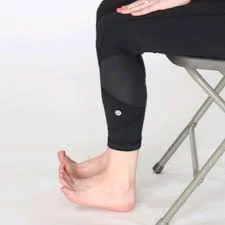
To do this exercise:
- Sit up straight on your chair, feet flat on the ground.
- Lift your heels and keep your toes on the ground. When the soles of your feet remain on the ground, a stop.
- After five seconds, maintain this posture and then lower your heels.
- During the second stage, toes should be pointed and heels raised, with only the tips of the big and second toes touching the floor.
- Hold down for five seconds, then release.
- Elevate your heels and curl them inward so that only the tips of your toes touch the floor during the third stage. Hold your posture for five seconds.
- Repeat each step ten times to improve your flexibility and mobility.
Toe extension
Heel pain is caused by plantar fasciitis, which can be prevented or treated with this stretch.
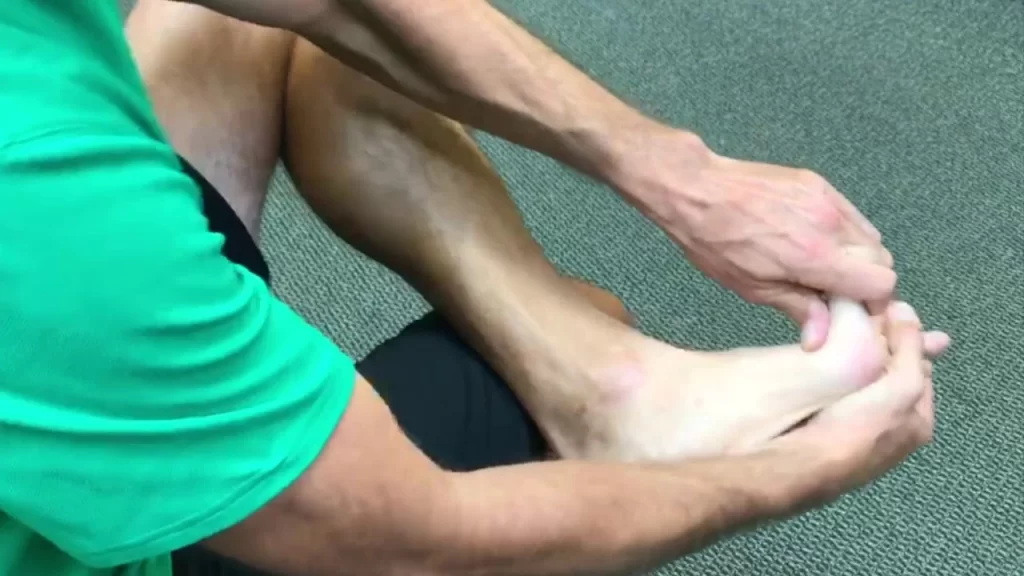
How to do it
- Take a seat with a straight back and place your feet level on the ground.
- Raise one foot and plant it on the thigh opposite from you.
- Using one hand, grab your toes and pull them towards your ankle until you feel a stretch in the heel cord and around the sole of your foot.
- While stretching, use your other hand to massage your foot’s arch. Hold for ten seconds.
- Ten repetitions for every foot.
Ankle rolls / Ankle Circles
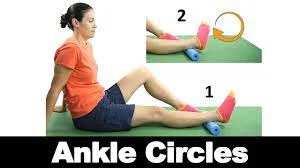
How are ankle rolls performed:
- Place a foam roller or rolled towel under your ankle.
- Gently rotate your ankle in ten clockwise and ten anticlockwise revolutions.
- Don’t move your leg; only move your foot and ankle.
- Use your big toe to follow the alphabet’s letters to change up the stretch.
The benefits of performing ankle roll exercises:
- Ankle circles are a dynamic stretching exercise that helps you release tension and relax your ankle joints.
- In addition to increasing your range of motion, this exercise warms up your ankles, calves, and feet to help you avoid injury from exercise.
Calf stretches
This stretch requires a hand towel.
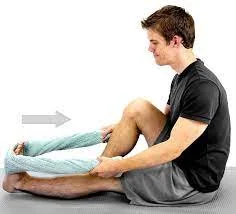
How to do it
- Take a seat on the ground with both legs extended in front of you.
- Wrap a hand towel around the ball of one foot. Hold the towel at both ends.
- Pull the towel towards the upper body while keeping the legs straight, then hold the stance for 30 seconds. Relax for a half-minute.
- After three repetitions of the stretch, switch sides.
Advice:
- If necessary, use more power on the towel to modify the stretch’s intensity.
- Throughout the stretch, the back should remain straight.
Benefits of calf stretch
For the treatment of a wide variety of foot and ankle issues, calf stretches are an essential component. The position, motion, and balance of the foot can all be impacted by calf tightness. It is frequently the source of knee and foot discomfort. Two muscles combine to produce the calf, which pulls the toes downward.
Toe curls
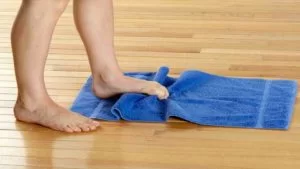
How can I work out the toe curls:
- You must sit on a chair with your heels under your knee joints or stand with your hips shoulder-width apart to perform this exercise.
- Maintain a straight body alignment with your feet and legs, pointing your toes forward. Lift your foot, flex it backward, and place your heel down.
- On towel ends, your heel should be stable. To the extent that you are able, extend your toes with your middle foot and both sides to make contact with the towel.
- Scoop the towel towards you by passing it between your toes. Aim to form a deep dome under the arch.
- Each time you pull back and straighten your foot, a small amount of towel will move around.
- In addition, you relax between two sessions.
- Perform this motion for a minimum of five to six times.
- This exercise can also be performed with just one foot.
- This is an activity you can perform once a day or possibly more than once.
The advantages of toe-curling.
- assist in making your feet stronger.
- strengthens your feet generally, supports your arches, and helps you stretch and flex your foot to better balance.
- Additionally, toe curls can aid in reducing pain
- and in the prevention of foot conditions including plantar fasciitis.
- Improves foot strength and flexibility.
Seated forward bends

Step-by-Step Instructions
Start by placing your legs straight in front of your upper body to sit in Staff Pose (Dandasana).
- Raise your arms overhead and straight out to the sides to extend your reach towards the ceiling.
- Take a breath and extend your back.
- Exhale and lean forward, bending at the hips. Imagine your pelvis as a forward-tilting bowl of water.
- Extend your backbone with every breath. For this, you could tilt slightly forward.
- With each exhale, deepen your forward bend. Instead of your nose reaching your knees, imagine your stomach resting on your thighs. This will help you to keep a long spine.
- Maintain your neck’s natural extension from your spine by avoiding letting it extend too low or straining it upward.
- Once you reach your maximum extension with a long spine, choose to keep in this position or curve your spine forward.
- Grasp your shins or ankles, whatever is most accessible. Another option is to bind a strap around your feet. Throughout, maintain a powerful flexed foot position.
Advantages
This pose helps open up your hips and stretches these areas. This is a great stretch for runners who have tight hamstrings. It’s also regarded as a soothing stance, just like many other yoga poses. Forward bends are supposed to help reduce tension and possibly elevate your mood.
Exercises for flexibility
Exercises for joint flexibility might be a useful supplement to a thorough rehabilitation program for people with neuropathy in their feet. Peripheral neuropathy and familial amyloid polyneuropathy are two types of neuropathy that can cause tingling, discomfort, and numbness in the foot. Exercises for joint flexibility mainly focus on the ankle and foot joints to increase the range of motion and decrease stiffness.
These exercises help increase flexibility in the areas affected and release tight muscles with moderate motions. Joint flexibility exercises are a great way for people with neuropathy in their feet to improve their overall range of motion and function. You should do these exercises under the supervision of a physician who specializes in treating neuropathic problems.
Toe Splay
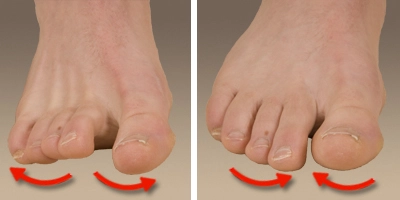
How to do it:
- Sit straight on a chair, feet flat on the ground.
- As wide as it is comfortable for you, spread your toes. Keep your posture for five seconds.
- Ten times over, repeat.
Toe extension
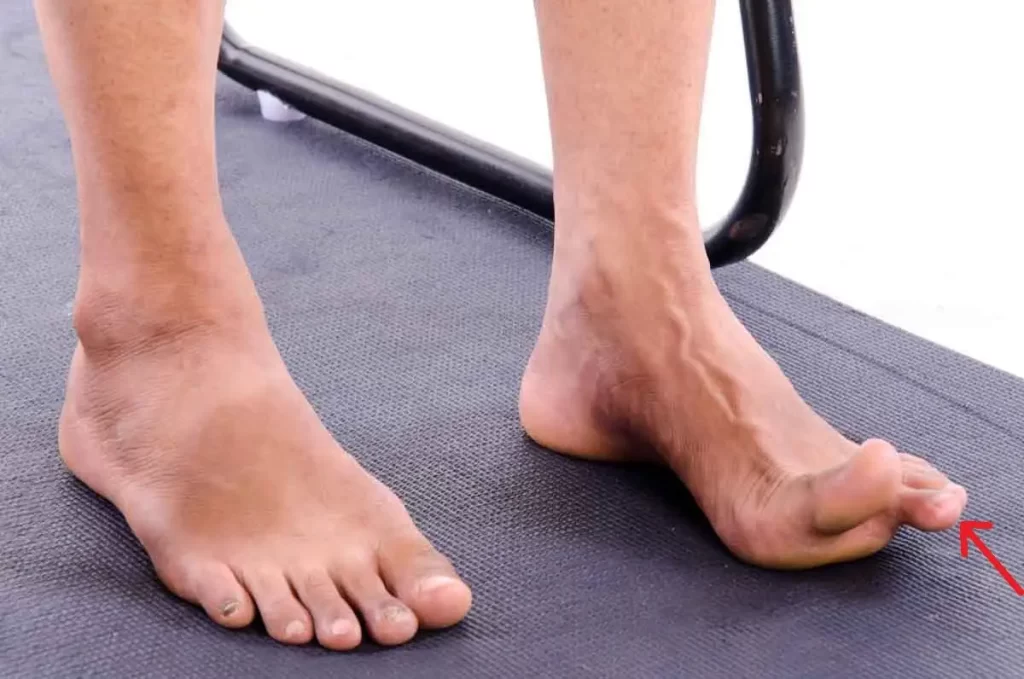
How to do it
- Sit up straight on your chair, feet flat on the ground.
- The left foot should be placed on the right thigh.
- Bring your toes up to your ankles. The heel muscle and the sole of the foot should feel stretched out.
- For ten seconds, hold.
Toes to pick up
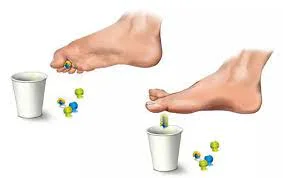
Methods for doing it
- Spread multiple little marbles, stones, or balls on the ground close to your feet, enabling you to pick them up with your toes.
- Put a mug or drinking cup on the ground so that your foot may easily reach it.
- Try using just your toes to pick up the marbles or pebbles.
The advantages of having powerful feet
Knee and hip stability are correlated with foot stability. When the foot collapses, the knee frequently follows, putting stress on the hip and possibly the back as well. Increasing the strength of your calf, shin, and foot muscles will support your natural arch and add extra stability up the chain.
Roll of a tennis ball

How Should This Exercise Be Performed
- Place the tennis ball under your toes and take a seat on a chair’s edge.
- Using as much pressure as you can handle, roll the ball from your toes to your heel.
- Using your forefoot, roll the ball in little circles from your toes to under the ball of your foot.
- Now, move the ball on your arch in tiny circles (from the ball of your foot to the base of your heel).
- After that, roll the ball on your heel in little circles.
- Carry out the previous steps with your other foot.
Benefits Perform This Exercise.
This exercise increases blood flow to the area and releases tension from the muscles and ligaments on the bottom of your foot. This practice can help if you find that the first few steps of the day hurt.
Stretching your big toes
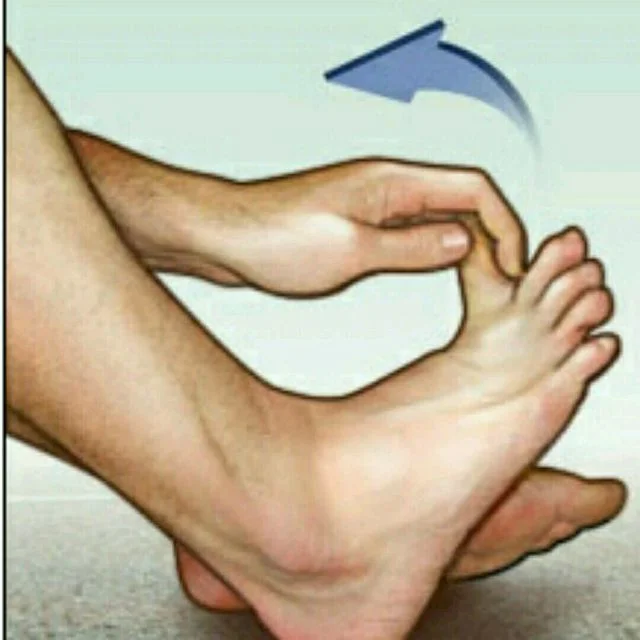
- Use this three-part stretch to maintain a healthy range of motion in your big toe.
- Take a seat with a straight back and place your feet level on the ground.
- Raise one foot and plant it on the thigh opposite from you.
- Your big toe can be gently stretched up, down, and to the side away from the other toes with
- your fingers. For five seconds, hold the stretch in each direction.
- In each direction, repeat ten times.
- With the other foot, repeat.
Achilles stretch
The Achilles tendon is the tendon that enters your calf muscles and goes up your heel. Leg, ankle, and foot pain can be avoided by maintaining flexibility.
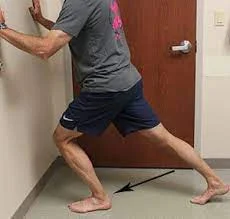
How to do it:
- With your hands on the wall and your arms extended, take a position facing the wall.
- With your knee straight, place one foot back behind you and bend the other leg.
- Make sure your heels are flat on the ground by adjusting your stance.
- Till your Achilles tendon and calf muscle feel stretched, bend forward from the hips.
- If needed, change your posture such that your heels remain on the ground and you can feel the pull.
- You can press your hips forward and slightly bend your back knee to feel the stretch in a different spot.
- Repeat three repetitions, holding each stretch for thirty seconds.
- Change legs and repeat.
Sand walk

The advantage of sand walking
- scrubbing off. Sand cleanses naturally. Walking barefoot will help soften your soles and remove dead skin cells.
- It takes more work to walk in the sand than it does on a hard surface. Your foot and ankle will become stronger as a result of your tendons and muscles working harder. Walks on the beach will burn more calories than pavement strolls.
- For people who suffer from hip, back, or knee pain, walking on the beach is a great option because the sand reduces the pressure on the body’s bones and joints.
- Strengthening exercises. The muscles between your feet and back, particularly your calves, quadriceps, and glutes, will get stronger with the additional resistance.
Neuropathy strengthening exercises
Strengthening exercises are like giving a firm foundation to a building—they provide stability and support for the feet—and can help people with peripheral neuropathy maintain their general well-being and foot health. Exercises that focus on building muscle strength and coordination are important for preserving equilibrium and avoiding falls. These exercises target the muscles in the lower legs and feet that may have atrophied or developed weak as a result of neuropathy.
Three main topics about strength training exercises for neuropathy in the feet: workouts using resistance bands, exercises involving balance, and exercises involving strengthening the ankle. While balance training activities can strengthen proprioception and minimize the risk of falls, resistance band exercises can help improve muscle strength and stability in the lower extremities. Exercises that target the muscles surrounding the ankle joint, such as ankle strengthening exercises, can assist people with neuropathy to become more mobile and stable.
Resistance band workouts, heel raises, ankle circles, and toe curls are a few types of strengthening exercises for neuropathy. Regularly performing these exercises can assist in improving range of motion, muscular tone, and general foot function. People with neuropathy can improve the health of their feet and lower their risk of problems by including strengthening activities in their routine.
Exercises with resistance bands
For those with peripheral neuropathy in their feet, resistance band workouts offer a flexible and effective way to improve strength, flexibility, and circulation. The following four main advantages of adding resistance band exercises to an exercise program for neuropathy are:
- Improved muscular strength: Resistance bands aid in developing strength and stability by testing the muscles in the lower legs, ankles, and feet.
- Increased flexibility: By using resistance bands to work on the tendons and muscles in the feet, you can improve your range of motion.
- Improved circulation: Applying resistance bands to the feet helps to increase blood flow, which is important for those with peripheral neuropathy since it helps reduce symptoms like tingling or numbness.
- Low joint impact: Resistance band exercises are a safe alternative for those with foot neuropathy who might not be able to take part in high-impact activities because they are mild on the joints.
These exercises help strengthen the ankles.
Instructions: Choose a Thera-Band resistance level that allows you to perform two to three sets of eight to twelve repetitions. Make sure to consult your healthcare physician about the proper resistance and repetitions if you are recovering from an injury.
Dorsiflexion of the Ankle Thera-Band
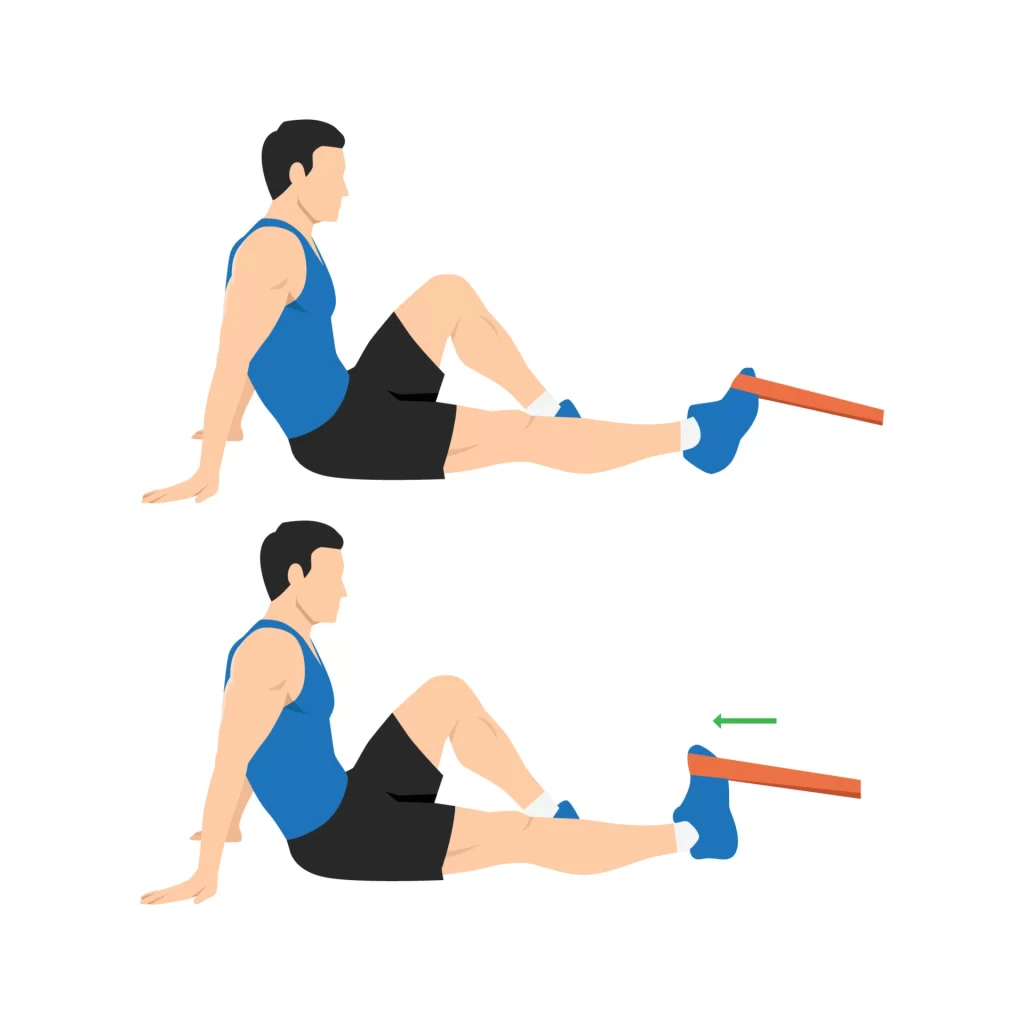
Instructions:
- Sit on the floor, legs completely extended.
- Using the band, create a loop, then securely attach one end of the loop close to the ground. Insert the foot being worked out inside the loop.
- Push your ankle in the direction of your head against the tubing’s resistance.
- Hold, then make a gentle return.
Thera-Band Ankle Plantarflexion
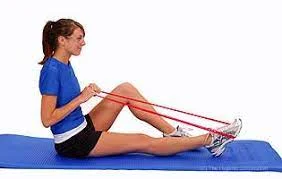
Instructions:
- Sit with both knees outstretched on the floor.
- Grasp the ends of the band and loop the middle around one foot.
- Press the foot down against the band’s resistance.
- Return gradually.
Ankle Inversion with Thera-Band
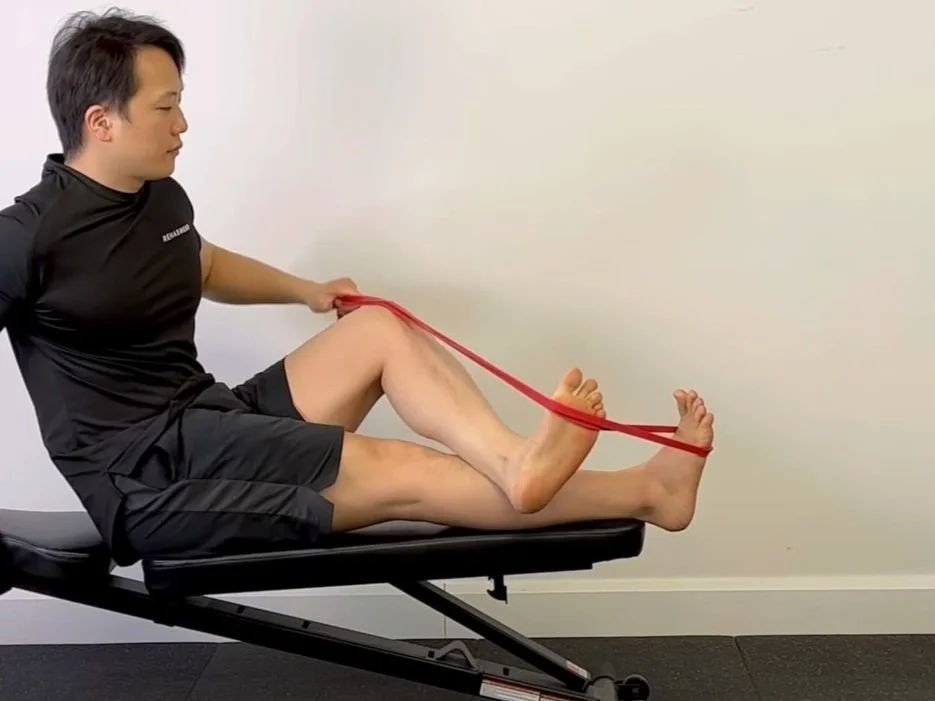
Instructions:
- Sit on the floor, with your legs completely stretched.
- Using the band, create a loop, then securely attach one end of the loop close to the ground. Insert the foot being worked out inside the loop.
- Pull your ankle inward to overcome the band’s resistance.
- Hold, then make a gentle return.
TIP: To finish the action, don’t rotate your leg; instead, keep your knee steady.
Ankle Eversion with Thera-Band
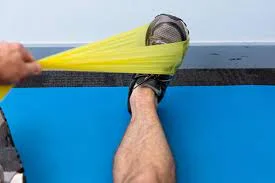
Instructions:
- Sit on the floor with your knees bent fully.
- Using the band, create a loop, then securely attach one end of the loop close to the ground. Insert the foot being worked out inside the loop.
- Push your ankle outward in opposition to the band’s resistance.
- Hold, then make a gentle return.
TIP: To finish the action, don’t rotate your leg; instead, keep your knee steady.
Exercises to strengthen your ankles
For those with peripheral neuropathy in their feet, ankle-strengthening exercises are an important component of an all-encompassing exercise program. Stability and balance are mostly dependent on the muscles surrounding the feet and ankles, so strengthening these muscles is important.
By increasing muscle strength, flexibility, and proprioception, ankle strengthening exercises can improve overall foot function and lower the risk of falls. Ankle dorsiflexion and plantar flexion exercises using resistance bands or weights are common exercises for strengthening the ankle. Exercises that focus on the ankle’s inversion (turning inward) and eversion (turning outward) movements can also improve balance control. People can improve foot function and reduce the effects of peripheral neuropathy on their everyday lives by consistently doing these exercises as part of a step-by-step program for neuropathy in the feet.
Heel raises
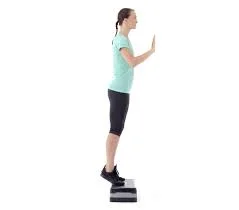
how to do it
- Hold on to something solid for support, like a wall, table, railing, tree, or counter, with both hands.
- Place yourself between 6 and 12 inches away from a wall or other strong object.
- Raise your heels off the ground until your calf muscle, or the back of your leg, becomes extremely tight. Maintain straight knees and toes on the ground.
- Hold on for five seconds.
- Reduce your heel pressure gradually.
- Ten times over, repeat
Advantages of Exercise with Heel Raise
- There are several advantages to the heel raise/lift exercise. The activity of raising the heel strengthens the calf muscles. You will then benefit from this when you run, jump, or walk.
- You will get the spring back into your step when you do all of the heel raise exercises in this post. Perhaps even try out some new performing movements
Ankle circles
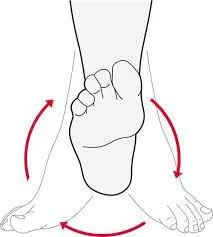
how to do it
- Circles around the ankles
- Begin by carefully rotating your ankle in circles, first to the left and then to the right.
- Attempting to sketch the alphabet with your foot in the air might even prove to be more practical.
- Minimize your movements and concentrate on using just your foot and ankle—not your whole leg.
Benefits of Exercise
Ankle circles are a dynamic stretching exercise that helps you release tension and loosen up your ankle joints. Along with boosting your flexibility, this exercise warms up your ankles, calves, and feet to help you avoid exercise-related injuries.
Toe curls
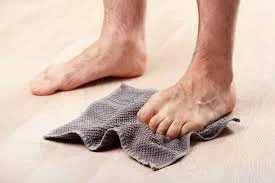
How to do it
- Your toes and upper foot muscles will get stronger from this exercise.
- Take a seat with a straight back and place your feet level on the ground.
- Place a hand or kitchen towel on the ground in front of you with the shorter end at your feet.
Exercises for balance in neuropathy
Exercises for balance are important for managing peripheral neuropathy because they increase proprioception and stability, which lowers the chance of falls and their associated problems. The goal of these exercises is to develop the muscles in the ankles, knees, and hips that are involved in balance.
Examples of balancing exercises for neuropathy include walking in a straight line from heel to toe, doing light Tai Chi movements, and standing on one leg with eyes closed. According to research, practicing these exercises regularly can help people with peripheral neuropathy dramatically improve their ability to maintain balance and experience fewer falls. People with neuropathy can effectively control their symptoms and improve their overall quality of life by including balance exercises in their daily program.
Exercises for balance training
For people with peripheral neuropathy, balance training exercises are very important because they increase stability and reduce the chance of falls. Having neuropathy in the feet can cause balance problems, making daily tasks difficult. Exercises for balance training concentrate on building strength in the leg, hip, and core muscles—muscles important in preserving stability. Usually, these exercises require one-leg stands or other challenging balancing movements. that balance training can significantly improve balance and lower the chance of falls in people with peripheral neuropathy. Through the integration of targeted balance training exercises into a consistent exercise regimen, people with neuropathy can improve their general stability and restore confidence in their capacity to perform everyday activities.
Balance Exercises for Neuropathy In Feet
This talk will center on balancing exercises for people who have neuropathy in their feet. These exercises are designed to increase stability and lower the chance of falling. The heel-to-toe walk, toe taps and lifts, and standing on one leg are three important exercises. The body has to work harder to maintain balance when standing on one leg, but toe taps and lifts help with control by focusing on certain foot muscles. The heel-to-toe walk improves general balance and promotes correct foot alignment. Research indicates that people with neuropathy in their feet may benefit from adding these exercises to a normal strength training routine.
Standing on one leg with support
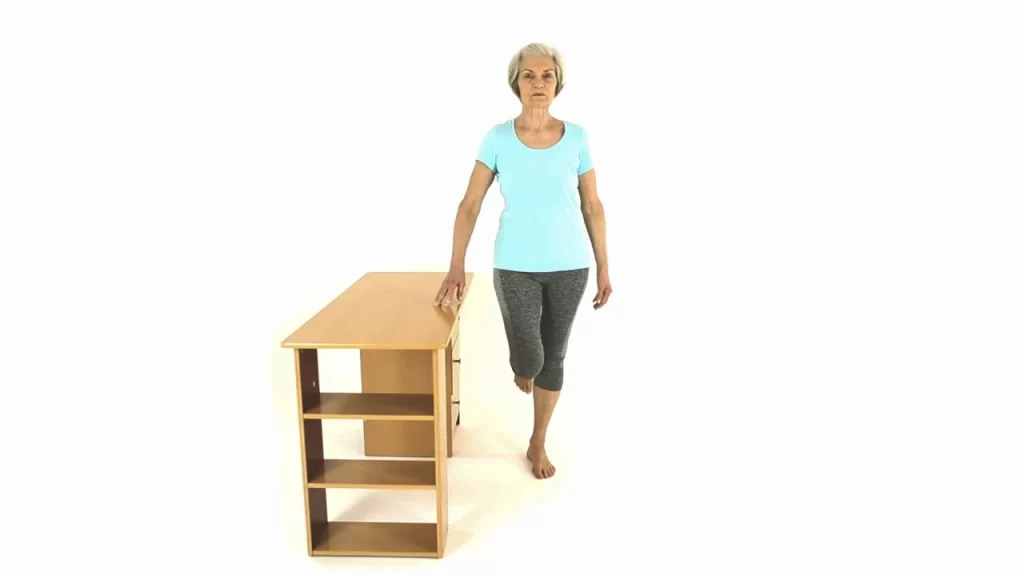
Patients with neuropathy may strengthen and stabilize themselves by attempting the difficult exercise of standing on one leg, which calls for extraordinary coordination and control. The goal of this exercise is to strengthen balance, which is a function that is frequently impaired in people with peripheral neuropathy.
By using the muscles in the foot and ankle, standing on one leg can increase proprioception and improve sensory feedback. Patients who perform this exercise regularly can improve the function and tingling feeling of their feet by stimulating the nerve endings in those areas. Standing on one leg also works the core muscles, which improves stability and lowers the chance of falling.
Toe taps and lifts
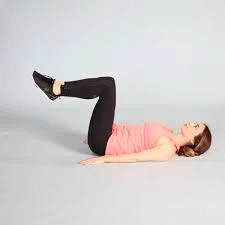
Controlled toe movements, such as taps and lifts, can help people with peripheral neuropathy improve their proprioception, balance, and general sensory feedback. With their particular focus on the feet, these exercises offer a focused method for treating neuropathy symptoms in this region. Toe taps and lifts provide the following four major advantages when included in a neuropathy exercise program:
- Improved foot coordination: Toe lifts and taps need exact control over each toe action, which aids in enhancing foot muscle coordination.
- Improved balance: These exercises can strengthen the arches of the feet to improve balance by using several foot muscle groups.
- Improved sensory input: Toe taps and lifts require careful movements that activate foot nerve endings, stimulating the brain’s sensory feedback loop.
- Proprioceptive training: By putting your body through its steps, these activities help you improve at perceiving your body’s position in space.
Heel-to-toe walk
The heel-to-toe walk is a difficult gait exercise where people must keep their balance while putting one foot in front of the other, forming a small base of support akin to tightrope walking.
Peripheral neuropathy sufferers have the amazing statistic that they can greatly improve their dynamic balance and lower their risk of falling by up to 50% by including the heel-to-toe walk into their routine.
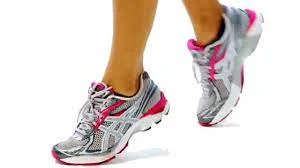
Exercise Guidelines
- Walk from Heel to Toe1. Look for an open area where you can move forward several steps at a time.
- With your feet together and your arms at your sides, take a proud stance.
- Step forward so that your heel is directly in front of the toes on the foot on the other side.
- Repetition of this gradual motion is advised, progressively quickening your speed as you gain comfort and confidence.”
- This exercise helps improve proprioception and general stability by focusing on the muscles and nerves in the foot. People with peripheral neuropathy can improve their ability to walk safely and confidently by doing this exercise regularly.
Heel to toe
The heel-toe raise is a great functional exercise that may be used to improve ankle strength and mobility. Balance is also tested as you change between the heel and toe lifts.
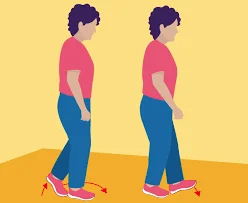
Instructions
- If you need balance, place yourself in front of a wall or seat.
- Raise your heels to place all of your weight on your toes.
- Reduce gradually and shift your weight to your heels to raise your toes towards the ceiling.
- Between each movement, move gently to articulate through your foot.
Take Care
Avoid “rocking” through the motion by using momentum.
Make sure the ankle stays in place at the highest point of the heel rise.
Make sure that your heels and toes are distributed equally in weight.
Tai Chi
Tai Chi has its roots in Chinese medicine, specifically qigong, and stretches back thousands of years. The discipline combines martial arts and meditation, which may seem like a strange mix. However, the goal is to calm down your mind and body by repeating rhythmic dance and breathing exercises for 30 to 60 minutes.

benefit of tai chi
Muscular strength. Tai chi helps increase both lower and upper body strength. Tai chi, when performed frequently, can be as effective as weight exercise and brisk walking.
Tai chi’s unsupported arm practice, which does not use weights or resistance bands, strengthens your upper body. Tai chi strengthens the lower and upper extremities, as well as the core muscles of the back and belly.
Flexibility. Tai chi helps improve upper and lower body flexibility and strength.
Balance. Tai chi improves balance and, according to some research, minimizes falls. Proprioception, or the capacity to perceive one’s location in space, decreases with age. Tai chi helps train this sense, which is made up of sensory neurons in the inner ear and stretch receptors in the muscles and ligaments. Tai chi also increases muscular strength and flexibility, making it simpler to recover from a stumble. Fear of falling might increase your risk of falling.
Aerobic conditioning. Tai chi can give cardio advantages based on the speed and intensity of the motions. If your doctor recommends a more difficult cardio activity with a greater heart rate than tai chi can provide, you may also want something more aerobic.
Aerobic Exercises for Foot Neuropathy
The aerobic exercises that people with neuropathy in their feet can do are covered in this section. Low-impact aerobic exercises have several advantages for neuropathy sufferers, including better circulation and less pain. Persons must wear suitable footwear when performing these activities to provide the best assistance and reduce the likelihood of damage.
Low-impact exercises
In addition, adding low-impact workouts to your regimen is like walking lightly on a cloud; it relaxes and speeds up the healing process for neuropathy in the feet. For those who are suffering from neuropathy symptoms, low-impact workouts are especially helpful because they lessen joint tension and lower the chance of injury.
These exercises are designed to improve balance, strength, and flexibility without putting too much pressure or impact on the body. Yoga, tai chi, cycling, and swimming are a few low-impact workouts.
Cycling gives you a cardiovascular workout with little impact, while swimming allows you to move your entire body without straining your feet. Both tai chi and meditation are slow, relaxing motions that improve balance. Including these activities in your everyday regimen can help you properly manage the symptoms of neuropathy.
Advantages of aerobic exercise
People who manage their neuropathy symptoms have been found to benefit from a variety of aerobic activities, such as better cardiovascular health, elevated mood, and increased levels of general fitness. The disease known as peripheral neuropathy is characterized by nerve degeneration in the limbs, including the feet.
Aerobic exercise can assist increase blood flow to these impacted areas, which can lessen neuropathy-related pain and suffering. Additionally, it has been demonstrated that performing aerobic exercise regularly increases endorphin production, improves mood, and reduces symptoms of depression and anxiety that can be experienced by people with peripheral neuropathy. Aerobic exercise can also help with weight management and overall fitness enhancement, both of which are important aspects of effectively managing this condition.
It is important to take into account the effect that aerobic exercises might have on the health and comfort of the feet as we move on to the topic of suitable footwear selections for people with neuropathy.
Cycling
Cycling is a healthful, low-impact sport that may be enjoyed by individuals of all ages, from children to seniors. It’s also enjoyable, cheap, and environmentally friendly.
Riding to work or the stores is one of the most practical methods to mix regular exercise with your daily routine.
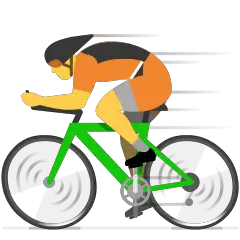
Benefits of cycle
- Low impact – it results in less strain and injury than most other kinds of exercise.
- Cycling is a fantastic muscular workout since it activates all of the major muscle groups as you pedal.
- Cycling is simple – unlike other sports, it does not demand a high level of physical ability. Most people understand how to ride a bike, and once you learn, you never forget.
- Cycling promotes stamina, strength, and aerobic fitness.
- Improved muscular strength and flexibility.
- Improved joint mobility.
Suitable footwear options
Choosing suitable footwear is important for those with peripheral neuropathy in their feet. Proper footwear can offer ease, stability, and protection to reduce discomfort and lower the likelihood of harm. To reduce pressure on the feet, it’s important to give qualities like cushioning and shock absorption priority when selecting footwear.
Choosing shoes with a large space for the toes can also assist in avoiding toe rubbing or compression. Additionally, you can lessen foot fatigue and increase stability when exercising by wearing shoes with a solid heel counter and supportive arch. Orthopedic shoes or inserts given by a healthcare provider are among the suggested shoe categories, as are athletic shoes made especially for jogging or walking.
Methods for reducing pain
Using a range of pain management methods is one technique that works well for treating neuropathic pain in the foot. For those who have neuropathy, these methods can help reduce discomfort while improving general quality of life. Using exercises made especially for neuropathy in the feet is one such method.
These exercises are designed to increase muscle strength, improve circulation, and lessen neuropathy-related pain. People can get specific instructions on how to carry out these exercises safely and correctly by following a step-by-step guide.
A table highlighting multiple approaches to pain management for neuropathy in the feet might be included to add interest to this section. There could be columns in the table with names like “Technique,” “Description,” and “Benefits.” This would make it simple for readers to evaluate and understand different methods of treating their foot neuropathy.
Lifestyle modifications
People with peripheral neuropathy may find it helpful to alter their lifestyle in addition to pain management methods. The goal of lifestyle changes is to reduce neuropathy symptoms and improve your overall quality of life. Managing foot numbness involves avoiding repetitive motions or prolonged pressure, as they might aggravate symptoms. Padded socks and properly fitting shoes can both assist lessen foot discomfort caused by pressure and friction.
In addition, it’s important to maintain a healthy weight through consistent exercise and a balanced diet because obesity may increase the symptoms of peripheral neuropathy. Low-impact exercises like cycling or swimming can increase blood flow to the extremities without overstressing the feet. People with neuropathy can lessen the impact of their disease on daily functioning and better manage it by making these lifestyle changes.
Exercises for Range of Motion in Neuropathy a picture of a person sitting on a chair with their legs outstretched in their Feet. With one foot propped up on a yoga block, the other is doing ankle circles.
Specifically, joint flexibility exercises and stretching techniques will be the main focus of this talk about the range of motion exercises for foot neuropathy. Exercises for joint flexibility are designed to increase the total range of motion and functionality of the foot joints, which can help reduce stiffness and limited range of motion—symptoms commonly linked with neuropathy. Stretching exercises for neuropathy can help improve circulation and lessen discomfort by making the muscles and tendons around the affected area more flexible. By focusing on particular problem areas while improving overall foot function, these evidence-based methods can help manage foot neuropathy.
Foot Neuropathy Treatment Options
People with neuropathy may benefit from regular use of these stretching exercises in a comprehensive therapy treatment, which may lead to improved foot flexibility and decreased discomfort.
Changes in lifestyle for neuropathy
A comprehensive strategy for handling neuropathic pain involves changing lifestyle choices that can boost alternative therapies’ effect and raise general well-being. Making changes to one’s lifestyle is important for reducing the effects of neuropathy on day-to-day activities and foot pain.
For those with neuropathy, regular exercise that focuses on improving balance, strength, and flexibility has been proven to be useful. Exercises that improve nerve health and blood flow to the extremities include walking, swimming, and cycling. Better symptom management can also result from eating a balanced diet high in vitamins B12 and D, controlling weight through portion sizes, and managing health conditions.
Alternative treatments for neuropathy
It’s been said that acupuncture, a kind of ancient Chinese medicine, is like a perfectly tuned orchestra with each needle representing a musician performing in unison to restore balance and relieve neuropathic pain. Acupuncture involves inserting small needles into exact places on the body. Acupuncture has been shown in studies to be beneficial for people with peripheral neuropathy in their feet.
Acupuncture has been demonstrated in multiple experiments to help patients with this illness experience less intense pain and better nerve function. According to one study, acupuncture combined with exercise improved the quality of life and reduced discomfort for those with diabetic peripheral neuropathy more than exercise alone.
Important points are taken away
Stretching activities can improve blood flow, decrease discomfort and tension in the muscles, and increase flexibility in people with neuropathy.
Muscle tone and range of motion can be improved, muscle strength and coordination in the feet and lower legs can be increased, and the risk of problems can be decreased with strengthening exercises for neuropathy.
To decrease fall frequency and boost the quality of life, balance exercises for neuropathy can strengthen muscles connected to balance, increase proprioception and stability, and improve balance control.
For those with neuropathy, low-impact aerobic exercises like swimming, cycling, yoga, or tai chi may increase general fitness, lessen discomfort, and improve circulation.
When Is Foot Nerve Pain Severe?
Your physician should evaluate any case of nerve pain in your feet. The following symptoms are medical emergencies, so you should see a doctor right away if you experience any of them:
- Incapacity to regulate function in the bladder or bowel
- Saddle Anaesthesia: tingling in the area between your legs, the saddle region
- Weaknesses: such as foot drop, in which you are unable to raise your foot correctly and stumble or trip frequently when walking; these are typically associated with a spinal issue as opposed to peripheral neuropathy of the feet.
Foot safety and health advice
- Exercise only after completing a complete warm-up program.
- When taking part in sports and daily activities, wear supportive footwear.
- Replace damaged shoes as soon as you can.
- To condition your feet and ankles, gradually improve your strength and flexibility.
- Avoid uneven ground, especially if you’re jogging. Avoid running uphill too much.
- Pay attention to your body. Try not to overdo things.
- Rest and seek the necessary medical attention to prevent any recurrence of the injury.
Diet
Foods to focus on:
- Fruits and vegetables include antioxidants and vitamins, which can help protect neurons from injury and inflammation. Choose a mix of colorful fruits and vegetables, including berries, leafy greens, broccoli, and sweet potatoes.
- Omega-3 fatty acids are anti-inflammatory and can aid enhance nerve function. Fatty fish (salmon, tuna, sardines), flaxseeds, chia seeds, and walnuts are all good sources of omega-3s.
- Whole grains provide fiber and B vitamins, which are beneficial to nerve function. Choose whole wheat bread, brown rice, quinoa, and breakfast instead of processed grains.
- Beans and legumes have high levels of protein, fiber, and B vitamins. They can also help regulate blood sugar, which is important to nerve function.
Foods to Limit:
- Processed foods: These are frequently heavy in unhealthy fats, sugar, and salt, which can lead to inflammation and exacerbate nerve pain.
- Sugary drinks can trigger blood sugar surges, which can harm nerves.
- Alcohol: Alcohol can also cause nerve damage and increase pain.
Why Nerve Pain Should Never Be Ignored
It’s important to never ignore nerve pain. This could result in permanent impacts if the discomfort is not addressed. The first step in treating any foot condition, including nerve pain, is to consult a podiatrist. A podiatrist can evaluate your condition and design a personalized treatment plan that works for you. The aim is to assist in reducing your symptoms and halting the progression of your pain so that you can immediately resume your normal activities with the least amount of disturbance.
Although foot nerve pain may appear to be a minor inconvenience, it may indicate a more serious underlying medical condition. Neuropathy can result in impacts like depression, chronic pain, trouble standing or walking, and even irreversible nerve damage if treatment is not received.
When to call a physician
If a person’s ability to engage in daily activities is threatened by foot pain, they should notify a doctor.
This is particularly important if the pain and other symptoms could be caused by an underlying illness, like diabetes.
Prevention
- Maintain a healthy weight: Being overweight puts additional strain on your feet, raising the possibility of nerve damage and compression.
- Get regular exercise: Blood circulation is improved by exercise, which nourishes and protects nerves. Try to get in at least 150 minutes a week of moderate-to-intense activity.
- Handle long-term conditions: Nerve pain may be aggravated by underlying illnesses such as autoimmune diseases, diabetes, and arthritis. You must adhere to your doctor’s advised course of action for treating these diseases.
- Wear supportive footwear: Go for well-fitting, cushioned shoes with sufficient arch support. Stay clear of shoes with tight-toe boxes and high heels.
- Protect your feet from injury: Prevent foot injuries by wearing suitable shoes when performing activities like sports or working in dangerous locations that could cause injuries to your feet.
- Give up smoking: Smoking causes nerve damage and prevents blood flow.
- Limit your alcohol intake because too much of it can cause nerve damage.
- Eat a balanced diet: Vital nutrients for the health of your nerves can be found in a diet high in fruits, vegetables, and whole grains.
Complication
Foot Complications:
- Foot ulcers: Reduced sensitivity might leave you unconscious of small injuries to your feet, increasing your chance of developing ulcers. These can get infected, resulting in amputation in extreme situations.
- Foot deformities: Nerve injury can weaken muscles, resulting in incorrect bone and joint position over time. This can cause hammertoes, bunions, and other abnormalities.
- Falls: Loss of feeling and muscular weakness can impair your balance and coordination, increasing your chances of falling.
- Painful sensations: Some people feel numb, while others suffer extreme burning, tingling, or stabbing pain. This has a significant effect on your quality of life and sleep.
Chronic pain can cause anxiety, sadness, and limited movement.
Autonomic dysfunction: In some situations, nerve injury may affect the nerves that guide autonomic activities including bladder and bowel control, temperature regulation, and digesting.
Risk factors
Medical conditions:
- Diabetes: Over time, high blood sugar can cause nerve damage that results in neuropathy. For those who have diabetes, this is one of the most typical reasons for foot pain.
- Autoimmune diseases: Rheumatoid arthritis, lupus, and Sjogren’s syndrome are examples of illnesses that can damage nerves and produce pain.
- Infections: Leprosy, HIV, Lyme disease, and shingles can all cause nerve injury and neuropathy.
- Vitamin deficits: Nerve injury may result from deficits in vitamins B1, B6, B12, and E.
- Renal disease: Nerve injury can result from renal disease’s high blood waste product levels.
- Liver disease: Issues with the liver can make it difficult for the body to absorb nutrients, which can cause damage to the nerves.
- Hypothyroidism: Nerve function and metabolism can both be slowed down by an underactive thyroid gland.
- Age: As people age, nerve degeneration becomes more common.
- Family history: Your chance of getting neuropathy is increased if your family has a history of the condition.
- Trauma: Foot and ankle injuries can injure nerves and result in pain.
Risk Factors related to lifestyle:
- Alcohol abuse: Drinking too much alcohol might cause nerve damage.
- Smoking: Smoking aggravates nerve injury and limits blood flow.
- Exposure to poisons: Some chemicals and toxins, like those present in some industrial settings or pesticides, can cause nerve damage.
- Repetitive stress: Nerves can get irritated or damaged by repetitive actions or activities that place pressure on the feet. Athletes, dancers, and anyone who spends a lot of time on their feet frequently experience this.
- Shoes: Wearing shoes that don’t fit well or offer enough cushioning could damage nerves and cause pain aggravated.
Summary
Foot nerve pain is a common issue that is frequently accompanied by tingling, numbness, and weakness.
Foot nerve pain can originate from a spinal issue or injury anywhere in the nerve’s path from the back to the foot.
Spinal stenosis and herniated discs are common spinal issues that result in nerve pain in the foot.
Numerous conditions, such as diabetes, infections, such as Lyme disease, nerve compression, such as tarsal tunnel syndrome, and certain medications can result in peripheral neuropathy.
Diabetes or a compressed nerve are the most common causes of nerve pain in the foot. There could be some health problems causing similar symptoms.
Thus, getting a diagnosis is important. It’s crucial to see a doctor if the pain is getting worse or if self-care methods aren’t working.
Together, the patient and the physician will create an effective therapy. When surgery is required, the success rate is usually quite high.
FAQs
What are the signs that the pain in my foot is nerve pain?
Pain in the foot caused by nerves might have sensations of burning, shooting, “electrical,” or stabbing. It could happen through the arch or on top of the foot. You may experience these feelings when at rest or while moving. On occasion, touch sensitivity can extend to the region nearest the nerve.
What are the telltale symptoms that my foot discomfort is a nerve issue?
Nerve pain in the foot might feel like burning, shooting, “electrical,” or stabbing pain. It may occur on top of the foot or through the arch. These sensations could be felt while moving or when at rest. Sometimes the area closest to the nerve is also sensitive to touch.
Is walking helpful with foot nerve pain?
Frequent physical activity, such as walking three times a week, can help stabilize blood sugar levels, reduce pain from neuropathy, and strengthen muscles. Mild exercises like tai chi and yoga may also be effective. Swimming is one form of pool-based exercise you might want to attempt if you have painful neuropathy in your feet.
What vitamin is best for repairing nerve damage?
Vitamins B1, B6, and B12 facilitate the formation of new cell structures, which opens the door to the next significant regeneration. Moreover, vitamin B12 supports nerve cell survival and remyelination, while vitamin B1 makes it easier to use carbohydrates for energy production.
How can I naturally heal my nerves?
Dietary Advice to Repair Nerve Damage
Foods High in Vitamin B for White Blood Cells.
Vitamin C-Packed Foods to Boost Immunity.
Foods High in Vitamin E to Develop Antibodies.
Ginger: The Natural Healer of Pain.
Get a Magnesium and Potassium Balance.
Antioxidants for Nerve Stress Relief.
Water for Hydration
Which seven vitamins help to restore nerve damage?
Eight Amazing Vitamins for Neuropathy
Acetyl-L-Carnitine. Acetyl-l-carnitine, or ALC, is a naturally occurring substance that the liver and kidneys manufacture. It can be used as a supplement to cure some ailments. …
B-Complex Vitamins: magnesium, calcium, glutamine, glutathione, alpha-lipoic acid, magnesium, calcium,…
N-acetyl cysteine
Are issues with the nerves serious?
Some nerve-related issues don’t affect day-to-day functioning. Others increase rapidly and can cause serious, chronic symptoms and issues down the road. If a medical issue is recognized and treated, you may have a very good prognosis. However, even when the cause is corrected, nerve damage can occasionally become irreversible.
Is neuropathy possible to cure?
Peripheral neuropathy is usually incurable, but there are several ways to keep it from getting worse. Your healthcare professional will address any underlying conditions, such as diabetes, before treating the pain and other neuropathy symptoms.
Which foods are beneficial to nerve pain?
The key is to avoid: Avoiding highly processed meals, added sugars, dairy, gluten, and excessive alcohol consumption is advised for those who suffer from neuropathy. These may make neuropathy symptoms severe by increasing blood sugar and causing inflammation.
Can damage to the nerves be healed by exercise?
Individuals who suffer severe traumatic peripheral nerve damage (PNI) are invariably left with a poor functional outcome and an incomplete recovery. It is commonly known that physical exercise-based rehabilitation, a non-invasive interventional technique, improves PNI recovery by stimulating nerve regeneration and reducing pain.
Which workout is ideal for those with neuropathy in their feet?
Because they actively use and develop the small muscle groups in the feet—which are crucial for preserving the structure and function of the feet—towel scrunches are a useful exercise for controlling neuropathy in the feet. This exercise improves the flexibility and agility of the toes, which leads to improved foot mechanics overall.
References
- Nerve Pain In Foot: Causes, Symptoms & Diagnosis. (n.d.). Foot-Pain-Explored.com. https://www.foot-pain-explored.com/nerve-pain-in-foot.html
- When You Have Nerve Pain in Your Feet. (n.d.). Austin Foot and Ankle Specialists. https://www.austinfootandankle.com/library/when-you-have-nerve-pain-in-your-feet.cfm
- Foot Nerve Pain | Med Diagnostics Rehab. (n.d.). https://www.meddiagnosticrehab.co/foot-nerve-pain.php
- Zambon, V. (2023, December 19). What can cause nerve pain in the foot? https://www.medicalnewstoday.com/articles/nerve-pain-in-foot#causes
- Cadman, B. (2023, December 21). Best stretches and exercises for healthy feet. https://www.medicalnewstoday.com/articles/320964#for-flexibility-and-mobility
- Dpt, A. S. (2023, December 30). Exercises Provide Home Remedies for Foot Neuropathy. Physio Ed. https://physioed.com/foot-neuropathy-exercises/
- Hayes, L. (2023, August 4). Exercises For Neuropathy In Feet: A Step-By-Step Guide by Leo Hayes. Mountain Ice Pain Relief Gel. https://www.mountain-ice.com/blogs/mountain-ice-blog/exercises-for-neuropathy-in-feet
- Zapata, K. (2021, July 8). Tips for Getting the Most from Walking on the Beach. Healthline. https://www.healthline.com/health/fitness/walking-on-the-beach#benefits
- Pioneer Podiatry – Exercise- Tennis Ball. (n.d.). Pioneer Podiatry. https://www.pioneerpodiatry.com.au/exercise-tennis-ball
- Tirgar, P. (2022, February 12). Toe curls exercise: Muscle worked, Health Benefits, How to do? – Mobile P. Mobile Physiotherapy Clinic. https://mobilephysiotherapyclinic.in/toe-curls-exercise-muscle-worked-health-benefits-how-to-do/
- Leg and Knee Exercises: Heel Raise. (n.d.). Saint Luke’s Health System. https://www.saintlukeskc.org/health-library/leg-and-knee-exercises-heel-raise
- Ohio, H. C. A. (n.d.). Thera-Band Ankle Exercises | Exercise Program Thera-Band Academy. 2012 Hygenic Corp. Akron Ohio. http://www.thera-bandacademy.com/tba-exercise-program/Thera-Band-Ankle-Exercises

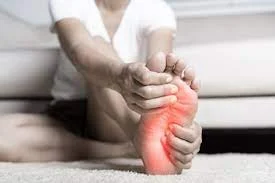
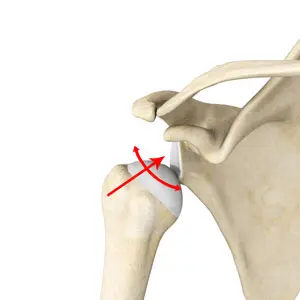
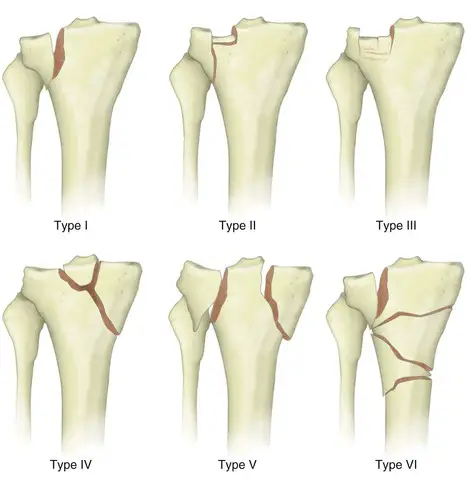
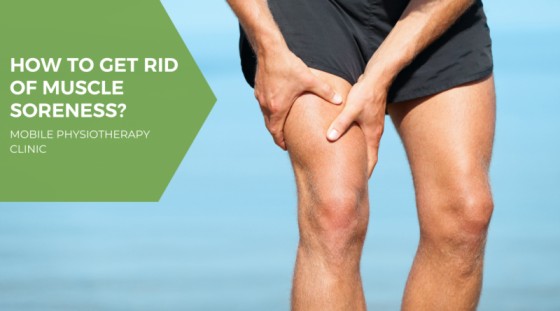
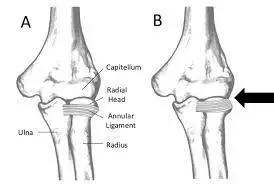


4 Comments